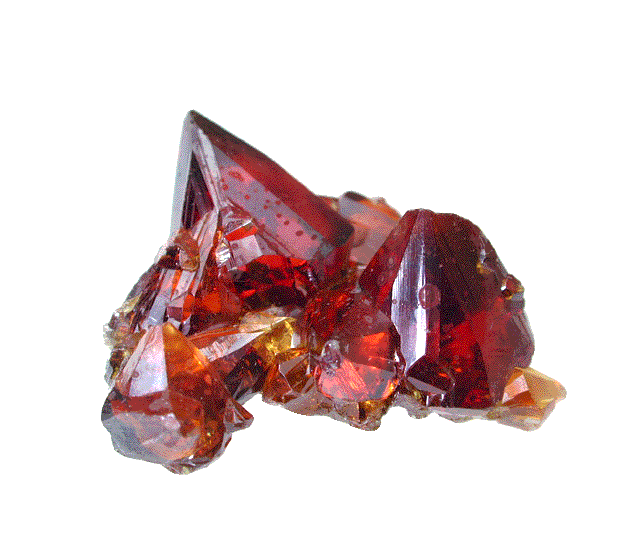
| Crystal system | Hexagonal |
| Transparency | Transparent to opaque |
| Luster | subconchoidal to adamantine |
| Fracture | Sub-Conchoidal |
| Cleavage | perfect prismatic |
| Specific Gravity | 5.70 |
| Hardness | 4 to 4.5 |
| Optical Character | Uniaxial+ Double Refractive |
| Refractive index | 2.013 - 2.029 |
| Birefringence | 0.016 |
| Dispersion | |
| Fluorescence | none |
| Pleochroism | |
| Chemical Formula | ZnO |
| Comments | Attacked by acids. |
| Streak | |
Although Zincite (ZINK-ite), the oxide of zinc (ZnO), is almost always found in compact, granular or foliated masses, very rarely beautiful red crystals suitable for cutting lustrous faceted stones are found. Even in view of its low degree of hardness (4 to 4 1/2) and perfect prismatic cleavage, the high R.I. (2.013 - 2.029) and near adamantine luster make zincite a highly prized collector's item; however, there is no interest in it as a jewelry stone. Orange-yellow specimens are also found occasionally.
Zincite crystallizes in the hexagonal system, has an S.G. near 5.68, a reddish to orange-yellow streak, a subconchoidal fracture, and is optically uniaxial with a positive sign. It is soluble in acids but is infusible. The only important locality is Franklin Furnace, Sussex County, New Jersey, where it occurs in metamorphic limestones with franklinite, willemite, rhodonite, sphalerite, rhodochrosite and calcite.
This mineral causes little difficulty in fashioning, except that the facet junctions may tend to pit and scratches may appear on facet surfaces. Changing polishing directions will usually help to eliminate the scratches. Crown angles of 35° and pavilion angles of 41°, using Linde A powder on a tin lap, will result in an attractive stone.

